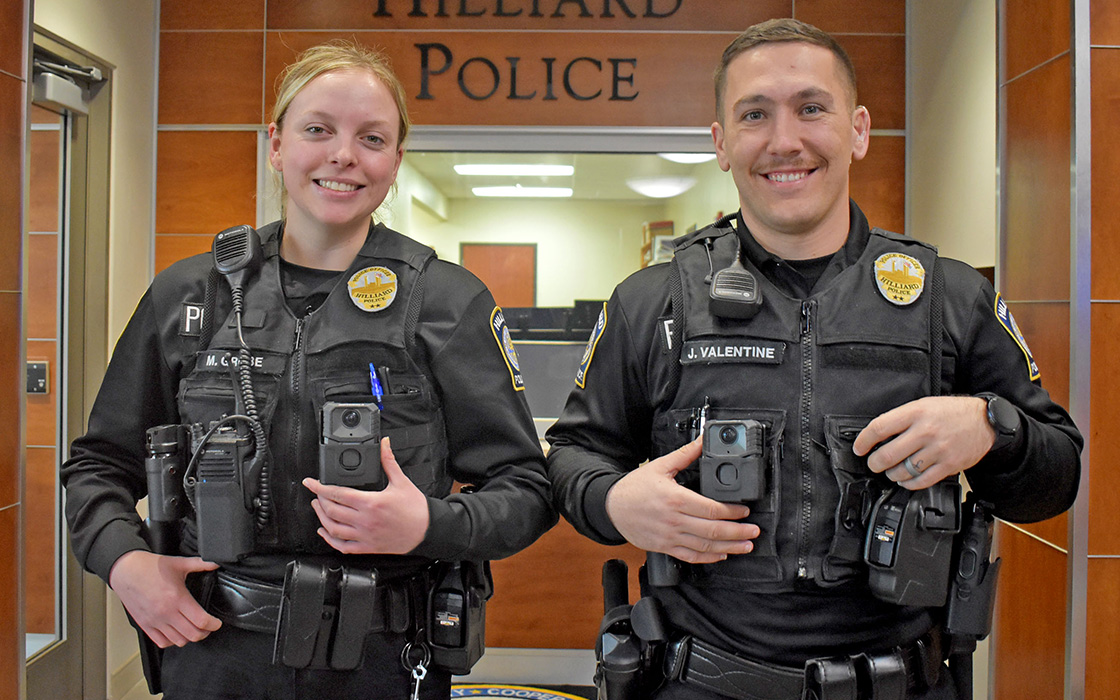As of this month, all Hilliard police officers are equipped with body-worn cameras, a tool leaders believe will ensure transparency.
The City of Hilliard Division of Police has been rolling out the camera program throughout the past few months to make sure there was a smooth transition.
Hilliard Chief of Police Michael Woods said the completion of the roll-out includes training on both the camera equipment and coordinating newly established policies.
“Using body cameras is an expectation of modern policing. Body cameras add valuable documentation and add to our transparency in policing efforts,” said Chief Woods. “This is a useful tool for law enforcement and the public.
“As part of this process we’ve had the opportunity to look at many existing policies, ensuring they are comprehensive in a rapidly shifting landscape,” he added.
The cameras are attached to the front of the officer’s uniform and capture views in the direction the officer’s body is facing. The cameras are turned on when an officer is planning to engage in police activity, such as responding to calls for service.
Additionally, the cameras integrate into the Division’s existing built-in cruiser cameras, meaning cameras will automatically turn on when emergency lights and sirens are activated.
Officers can also engage the cameras manually at any time.
Every sworn officer has been assigned a camera. Uniformed officers will always wear cameras when on duty. Investigators and administrators will wear cameras when planning to engage in activities such as conducting search warrants, and processing crime scenes.
The total start-up cost of the program, which includes 67 cameras, servers, charging stations, uniform mounts, and batteries, is about $190,000.
Hilliard City Council voted to fund the program in the City’s 2022 capital budget. The Division received $58,830 in grant funding from the State of Ohio’s Office of Criminal Justice Services to assist with the cost of launching the program.
In addition to promoting transparency, footage captured by the cameras can aid as evidence in court proceedings, improve officer training, and provide a neutral account of a situation.





